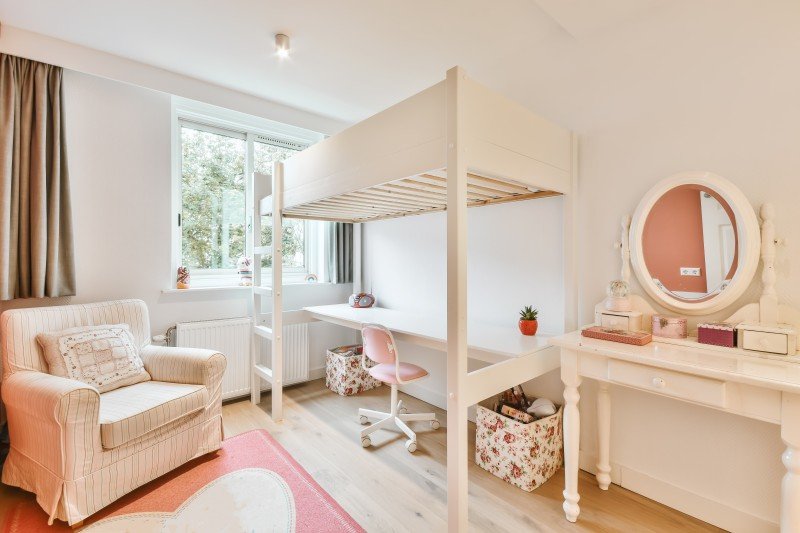The Ultimate Guide to Bunk Beds for Kids: Safety, Styles, and Solutions
Bunk beds have actually long been a popular choice amongst moms and dads seeking to optimize space in their kids's bedrooms. With benefits that go beyond their compact design, bunk beds use an enjoyable and practical sleeping plan while motivating brother or sister bonding and cultivating imagination. In this comprehensive guide, we explore various elements of bunk beds for kids, consisting of safety factors to consider, different designs available, and suggestions for selecting the ideal one for your family.
Why Choose Bunk Beds?
Bunk beds are developed to stack one bed on top of another, making use of vertical space to create more space for play and storage. They are particularly helpful for families with numerous kids or limited bedroom space. Furthermore, they supply an adventurous sleeping environment that kids often delight in.
Secret Advantages of Bunk Beds:
- Space-saving design: Ideal for small rooms or shared spaces.
- Cost-effective: Often more economical than buying two separate beds.
- Encourages social interaction: Promotes bonding amongst siblings or buddies.
- Versatile choices: Available in different styles and configurations to match any space style.
Security First: Essential Considerations
When selecting a bunk bed for kids, safety should be the top priority. The following features are crucial for ensuring a safe sleeping environment:
Important Safety Features:
- Sturdy Construction: Ensure that the bed frame is made of resilient materials such as solid wood or metal.
- Guardrails: Bunk beds ought to have guardrails on both sides of the upper bunk to avoid falls.
- Ladder Safety: A sturdy, integrated ladder or stairs with anti-slip rungs is necessary for safe access to the top bunk.
- Weight Limit: Check the maker's weight limit capacity for both the leading and bottom bunk.
- Bed mattress Size: Use the proper bed mattress size as specified by the bed producer to make sure a snug fit within the bed frame.
Security Tips for Parents:
- Monitor Sleep Habits: Teach children the significance of not using or leaping off the bunk beds.
- Age Appropriateness: Generally, the upper bunk is ideal for children aged 6 and older.
- Routine Inspections: Periodically check for any loose bolts, screws, or structural damage.
Styles of Bunk Beds
Bunk beds can be found in a variety of styles, enabling moms and dads to select one that complements their child's room decoration while meeting particular needs. Below are some popular styles:
Popular Bunk Bed Styles:
- Traditional Bunk Beds: Simple and classic designs made of wood or metal without any additional features.
- Loft Beds: Features a raised top bunk with space underneath for a desk, play area, or extra storage.
- L-Shaped Bunk Beds: Arranged in an L-shape, typically perfect for corner areas and can have additional storage alternatives.
- Twin over Full Bunk Beds: A twin bed on top and a bigger full-sized bed on the bottom, accommodating children or teens of various ages.
- Triple Bunk Beds: Designed to fit 3 beds in a single footprint, suitable for bigger households or sleepovers.
A Comparison of Bunk Bed Styles
| Bunk Bed Style | Description | Best For |
|---|---|---|
| Traditional | Timeless design with two stacked beds | Requirement bedroom setups |
| Loft Bed | Raised bed with usable space underneath | Homework or play locations |
| L-Shaped | Bunk beds set up in an L-shape | Corner areas |
| Twin over Full | Twin bed on top, full bed listed below | Various age brother or sisters |
| Triple Bunk | 3 stacked beds | Big households or sleepovers |
Picking the Right Bunk Bed
When searching for the ideal bunk bed, consider the list below factors to guarantee you make an informed choice:
Key Factors to Consider:
- Room Size: Measure the room measurements to determine the proper size and height of the bunk bed.
- Kid's Age: Consider the age of your child(ren) when choosing a design and security functions.
- Functionality: Think about how much storage or play space you need and whether the bunk bed ought to serve additional purposes.
- Budget: Set a budget plan that includes not only the bunk bed but likewise the needed bed mattress and devices like bed linen or safety gates.
FAQs About Bunk Beds for Kids
1. What age is suitable for a child to sleep in the top bunk?
Typically, kids aged 6 and older should be able to securely sleep in the top bunk, though you must constantly consider your child's maturity level.
2. Are bunk beds safe for young children?
It is not a good idea for young children or really kids to oversleep the top bunk due to the threat of falling.
3. How do I preserve the bunk bed?
Check the bed frequently for any signs of wear and tear, tightening up screws, and cleaning the bed mattress to ensure prolonged safety and resilience.
4. Can I convert a bunk bed into 2 different beds?
Many bunk beds are designed to be convertible, permitting you to separate the beds when required. Examine Rebeca Demauri before purchasing.
5. How can I make the most of space in a bunk bed room?
Use under-bed drawers, shelves, or lofted designs to develop extra storage solutions in a space with a bunk bed.
Bunk beds offer a delightful mix of fun, performance, and space-saving energy, making them an ideal option for young households. By thinking about security functions, numerous styles, and useful factors such as room size and age suitability, moms and dads can select the ideal bunk bed for their kid's requirements. With the right option, bunk beds can change a bedroom into a magical space that encourages play, creativity, and bonding amongst siblings. Always remember to prioritize security and upkeep to maximize this unique sleeping plan.

